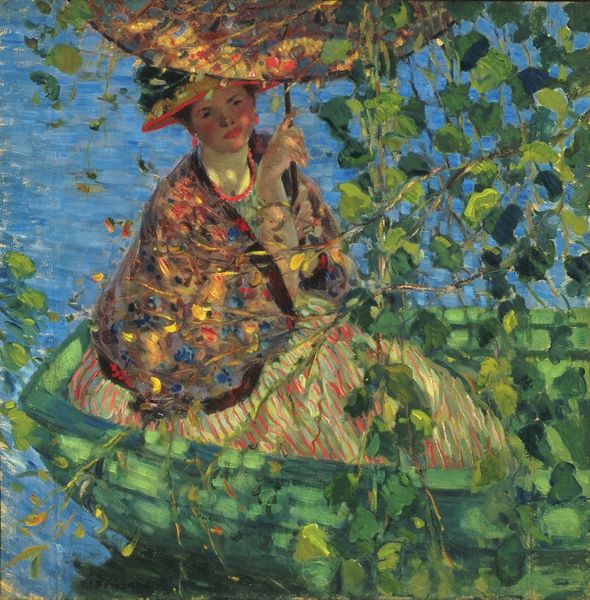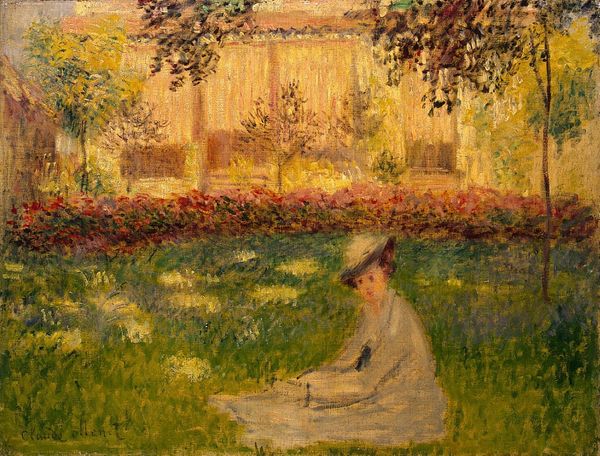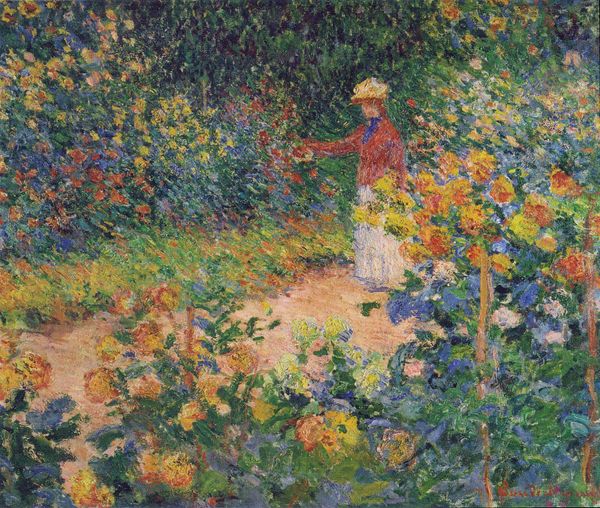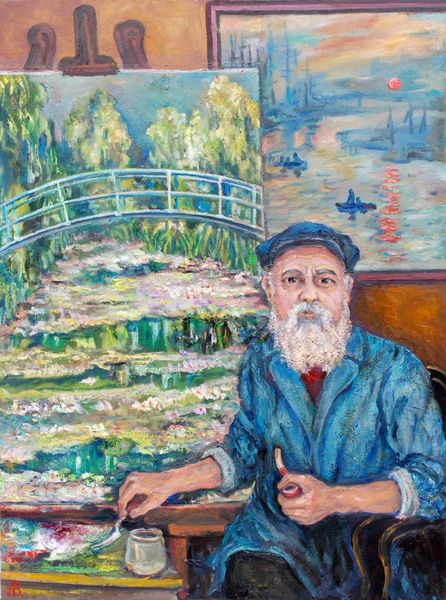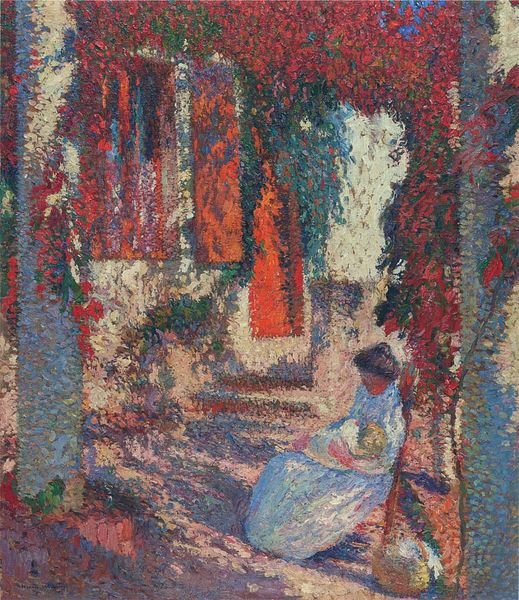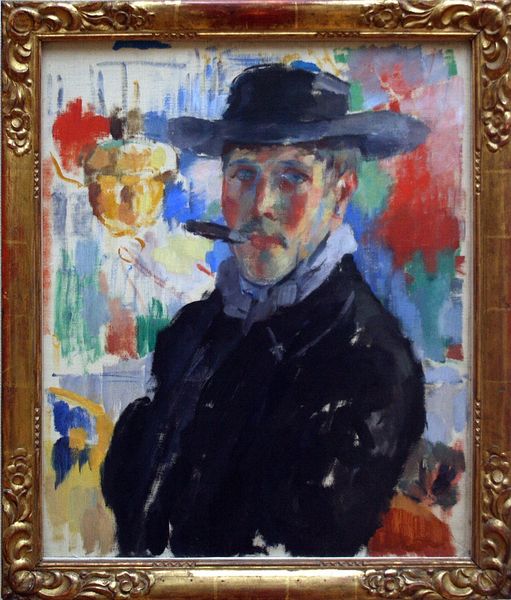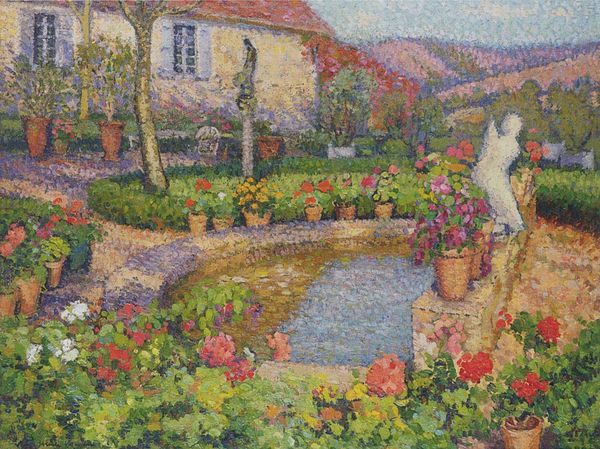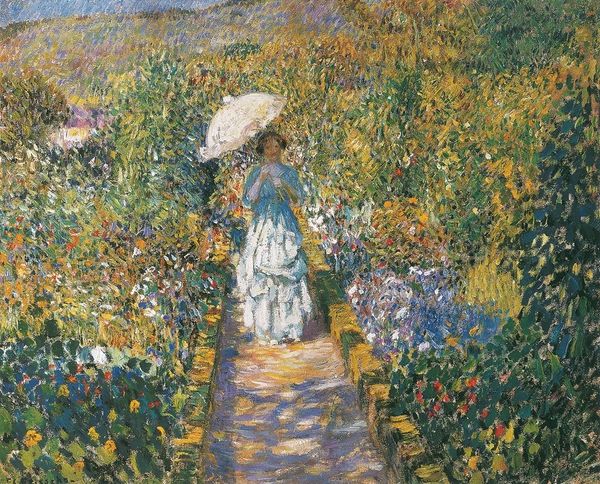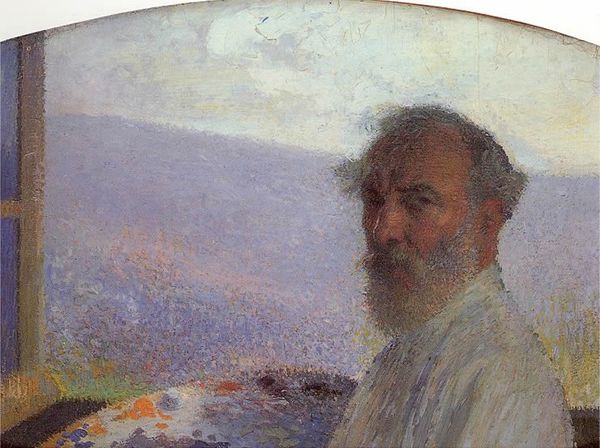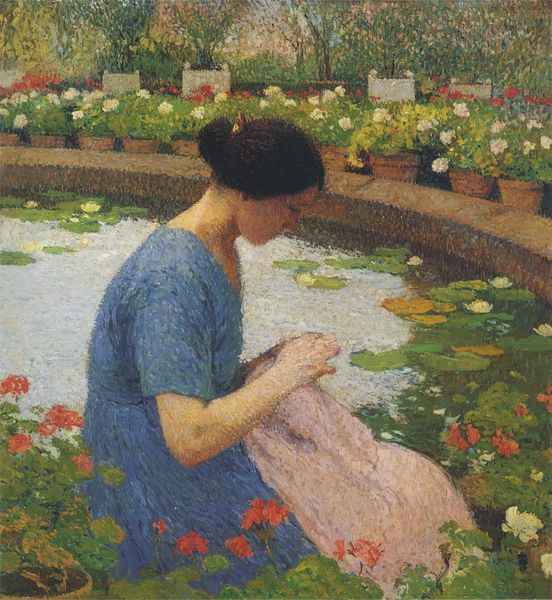
painting, plein-air, oil-paint
#
portrait
#
garden
#
self-portrait
#
painting
#
impressionism
#
plein-air
#
oil-paint
#
neo-impressionism
#
landscape
#
oil painting
#
famous-people
#
male-portraits
#
symbolism
#
post-impressionism
Copyright: Public domain
Curator: Henri Martin's "Self Portrait in the Garden" presents us with a fascinating image to consider. Editor: My first impression is one of shimmering light. The composition feels almost entirely built from color, a vibrating surface of dappled light and shadow. Curator: Indeed. What strikes me is how the means of production reflect the socio-economic context. Martin, a well-established artist by this point, is quite literally capturing leisure—a privilege afforded by his profession. His artistic labour and materials enable this very representation. Editor: That's an interesting point. From a formal perspective, the application of the oil paint through a pointillist technique creates a kind of optical mixing. Colors appear more luminous, edges soften and dissolve, giving the painting a dreamlike feel. The careful composition emphasizes the face in harmony with nature. Curator: Right, the technique mirrors a move towards mechanization; the repeatable brushstrokes suggesting a parallel to industrialized processes, while also hinting at nature being cultivated for artistic, leisure purposes. Editor: There’s also the symbolic aspect; the garden—a traditional Eden, is transformed into an artists’ domain. I mean the beard and hat immediately convey that stereotype to a viewer, establishing Martin himself within it, a clear connection that feels very intentional. Curator: This work participates in creating the artist persona, the labour involved being a strategic action within art world dynamics. He creates an appealing portrait but controls the distribution, visibility and inevitably, the capital that accrues. Editor: That control certainly resonates. Yet, it’s the interplay of complementary colors—the reds of the flowers against the greens of the foliage that really capture the essence. Curator: Absolutely. It's about how the production creates visibility in a culture dominated by certain classes. What lingers with me is the material relationship between the canvas and the artist. Editor: For me, it's the way the composition’s optical play captures something profound about sight and subjective experience.
Comments
No comments
Be the first to comment and join the conversation on the ultimate creative platform.
